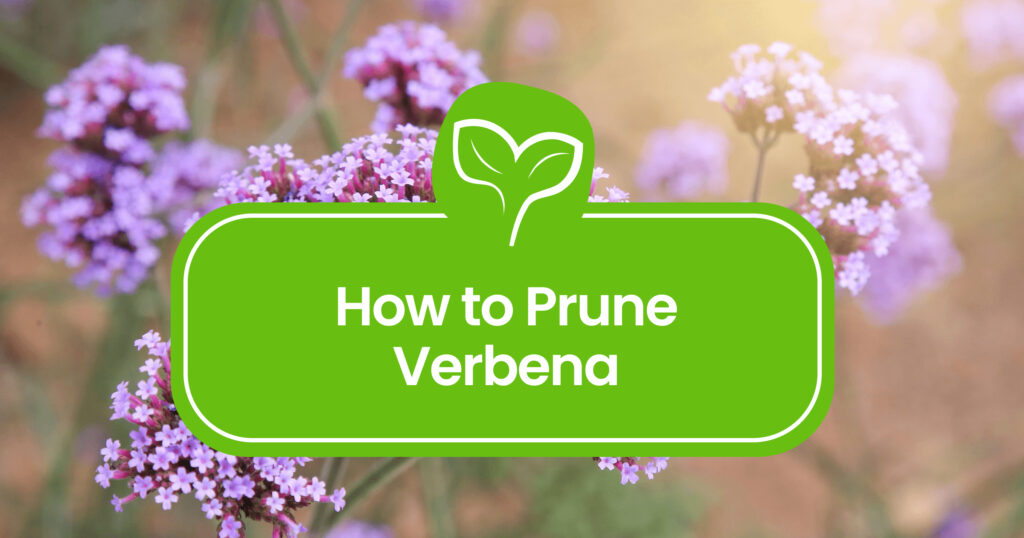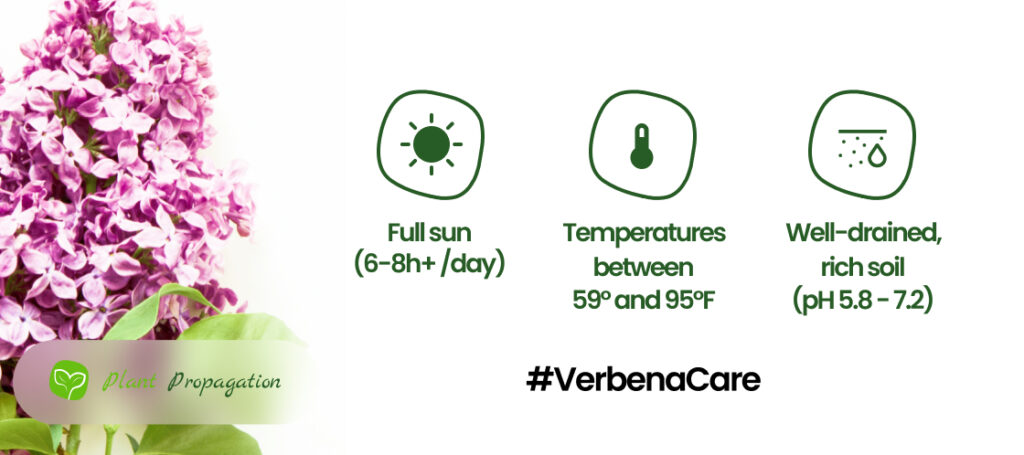
Welcome to our guide on how to prune verbena for lush, vibrant blooms! Whether you have a trailing verbena that’s looking a bit leggy or an upright variety that’s grown a little wild, a good trim can work wonders. Cutting back your verbena rejuvenates the plant, encouraging it to push out new growth and fill in with a more compact, full appearance. It’s all about helping your plants look their best and keeping your garden bursting with color. Let’s dive in and learn how to make your verbenas thrive!
When to Prune Verbena
It depends on the variety, but this is not very difficult. Perennial verbenas can be trimmed in the spring to shape the plant and encourage new growth. If your upright verbenas grow too tall, you can trim them back during the growing season. Trailing verbenas can be cut back anytime if they become leggy.
Tools You’ll Need
For pruning verbena, just grab a pair of sharp pruning shears and some sturdy gardening gloves. Pruning shears are key for making clean, precise cuts that keep your plants healthy. Pick a good quality pair that feels comfortable in your hand.
Gardening gloves are a must to protect your hands from thorns and rough stems. Look for gloves that offer a good grip and fit well.

How to Prune Verbena
Now, let’s get into the nitty-gritty of pruning verbena.
Pruning Perennial Verbena
- Spot Your Perennial Verbena: Perennial types like Verbena bonariensis and Verbena hastata stick around all winter and bloom again each year.
- Prune at the Right Time: Hold off until spring to prune your perennial verbena. It might be tempting to tidy up in autumn, but it’s better for the plants if you wait.
- Cutting Down Old Stems: In early spring, before new growth appears, trim the old flower stems as close to the base as you can. This gets the plant ready for fresh growth.
- Why Leave Dead Material?: Leaving dead stems and seed heads over winter is good for your garden and wildlife. Birds can munch on the seeds, and the old foliage gives critters a cozy spot.
- Let Them Self-Seed: By not cutting back in autumn, you let the plant potentially self-seed, meaning new verbena plants might pop up naturally.
- Spring Clean-Up: Come spring, after pruning, you can remove any unwanted seedlings or pot them up for new garden projects or gifts.
Pruning Bedding Verbena
- Spot Your Bedding Verbenas: Bedding verbenas are the seasonal stars of your garden, perfect for flower beds and containers.
- Trim When Needed: If your verbenas get too tall or trailing types start looking leggy, don’t hesitate to give them a trim. They can handle it!
- Light Touch Trimming: Throughout the growing season, give your bedding verbenas a light trim whenever they need it. This keeps them in shape and encourages fresh growth.
- Snip Off Unsightly Sections: See any straggly or messy bits? Go ahead and snip them off to keep your plants looking neat and tidy.
- Remove Dead or Damaged Parts: Regularly check for dead or damaged parts and remove them. This keeps your plants healthy and focused on producing new blooms.
Deadheading for Continuous Blooms
Deadheading can help your plant to grow more new flowers next season. You want to deadhead your Verbena about a month before the last frost. This means removing spent flowers and growth. The only reason for skipping this, and leaving the seed heads is if you want your Verbena to propagate.
Aftercare Tips
After giving your verbena some TLC with pruning and deadheading, it’s time for a little post-care to keep them happy and blooming.
- Watering: Keep the soil around your verbena consistently moist, especially when it’s hot and dry. Water deeply but not too often to encourage those roots to grow deep. Don’t overdo it! Instead, aim for the base of the plant to water directly at the roots.
- Mulching: Tuck some mulch around the base of your verbena to protect it during winter and keep that moisture in. Look for mulch with wood shavings, leaf mold, or compost—it’ll do the trick.

Frequently Asked Questions
When should you cut back Verbena?
You should cut back verbena in the spring once you see new growth popping up from the base. You can deadhead during the blooming season, but leaving seed heads over winter gives wildlife some extra cover and food.
Does Verbena need deadheading?
While most verbena varieties don’t need deadheading to keep blooming, it’s a good idea to trim back trailing types if they start taking over containers or garden space. A light trim every so often promotes fuller plants and even more flowers.
How do you make Verbena bushier?
Pinching back the tips of your plant can help your verbena to develop new branches and reach a bushier appearance.
Can I propagate verbena from pruned cuttings?
Yes, you can propagate verbena from pruned cuttings, especially during spring and early summer for softwood cuttings, or in late summer for semi-ripe cuttings.
